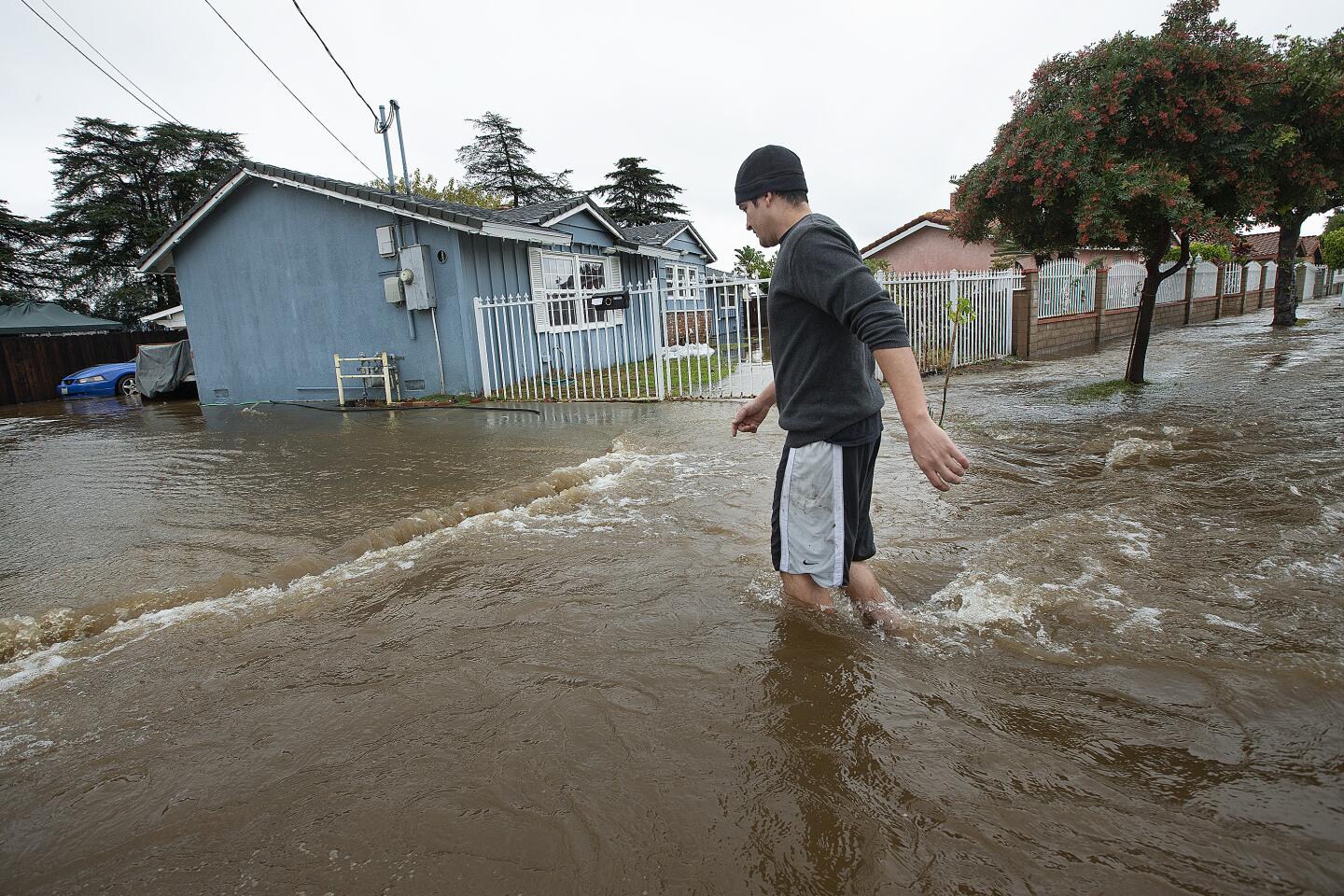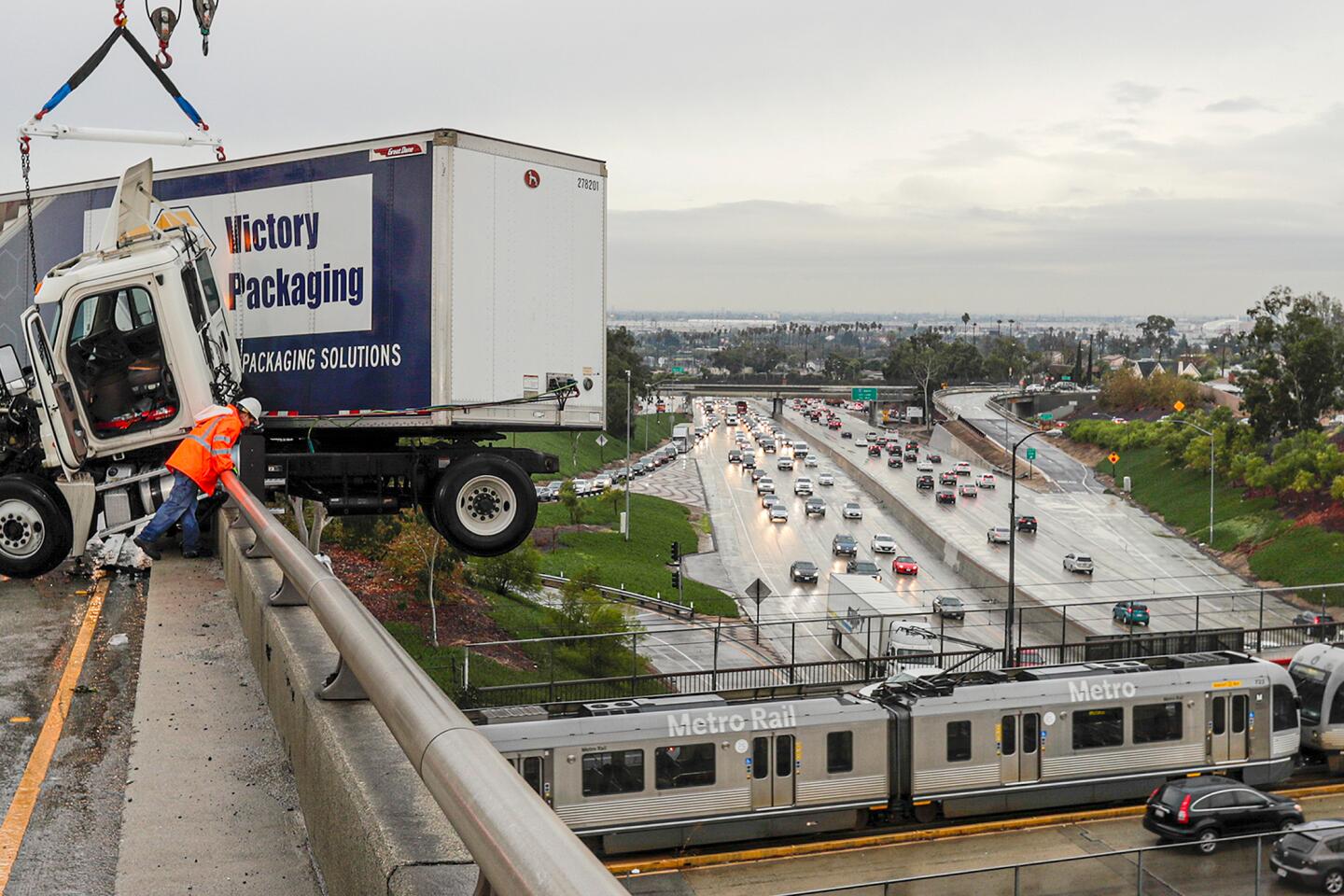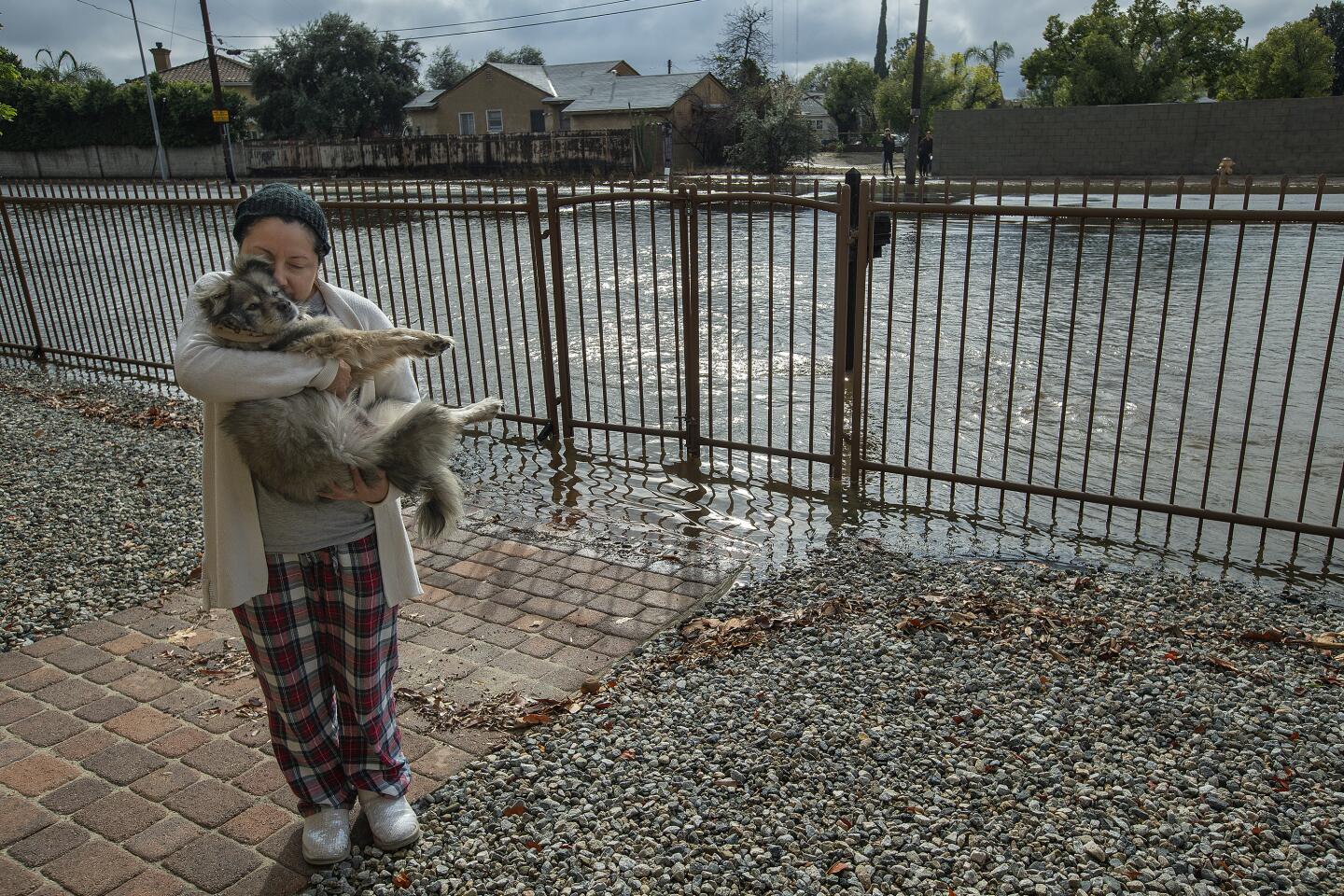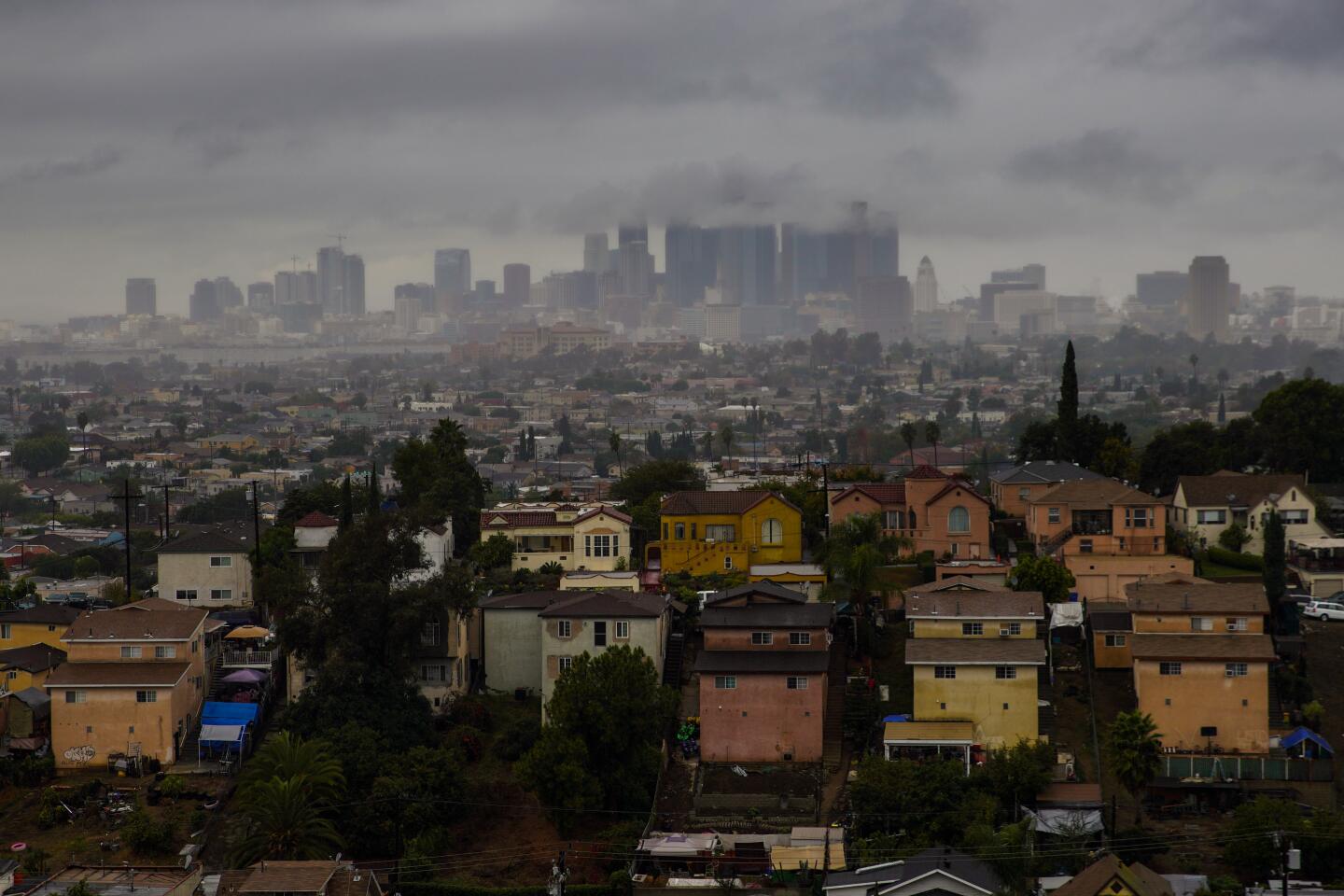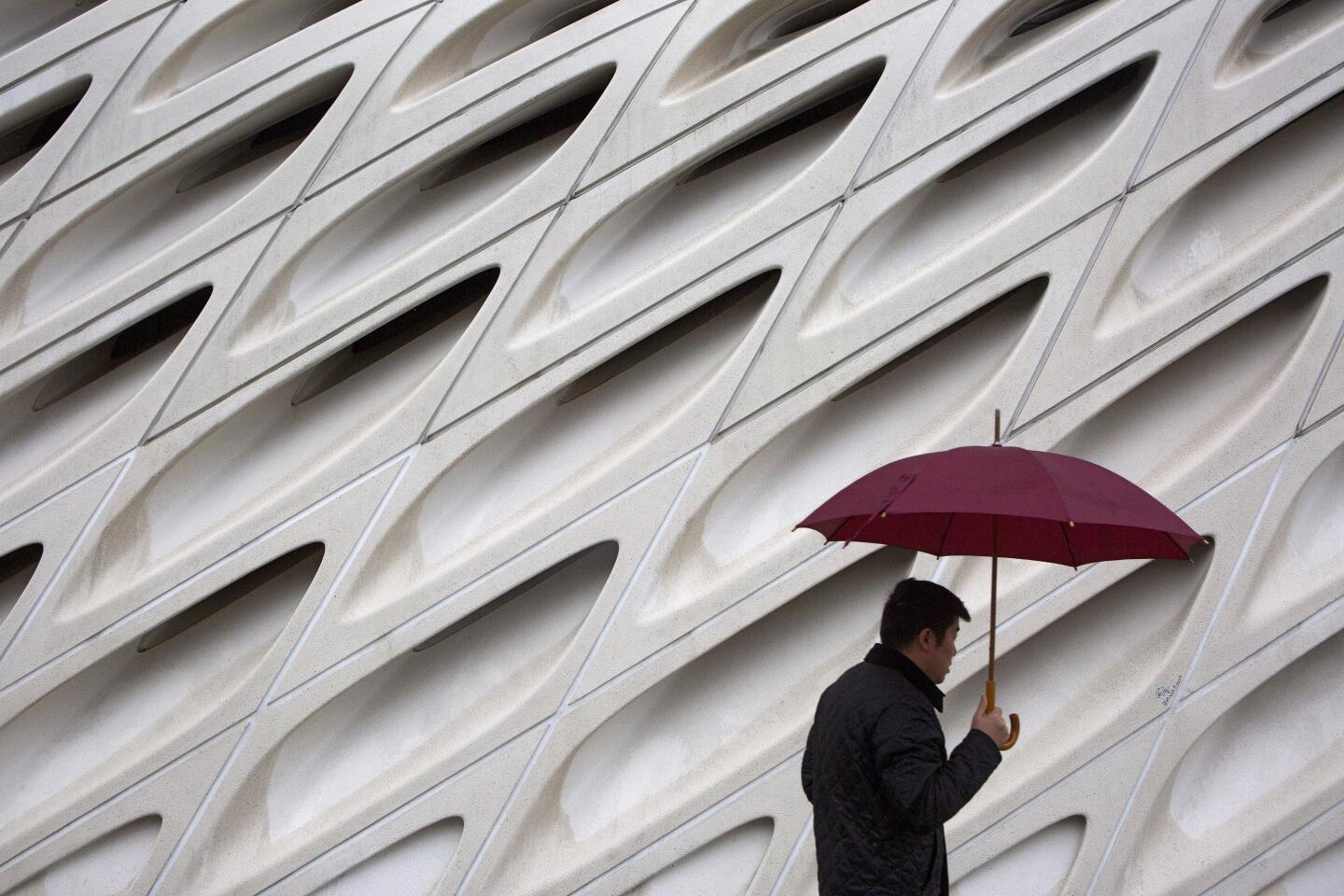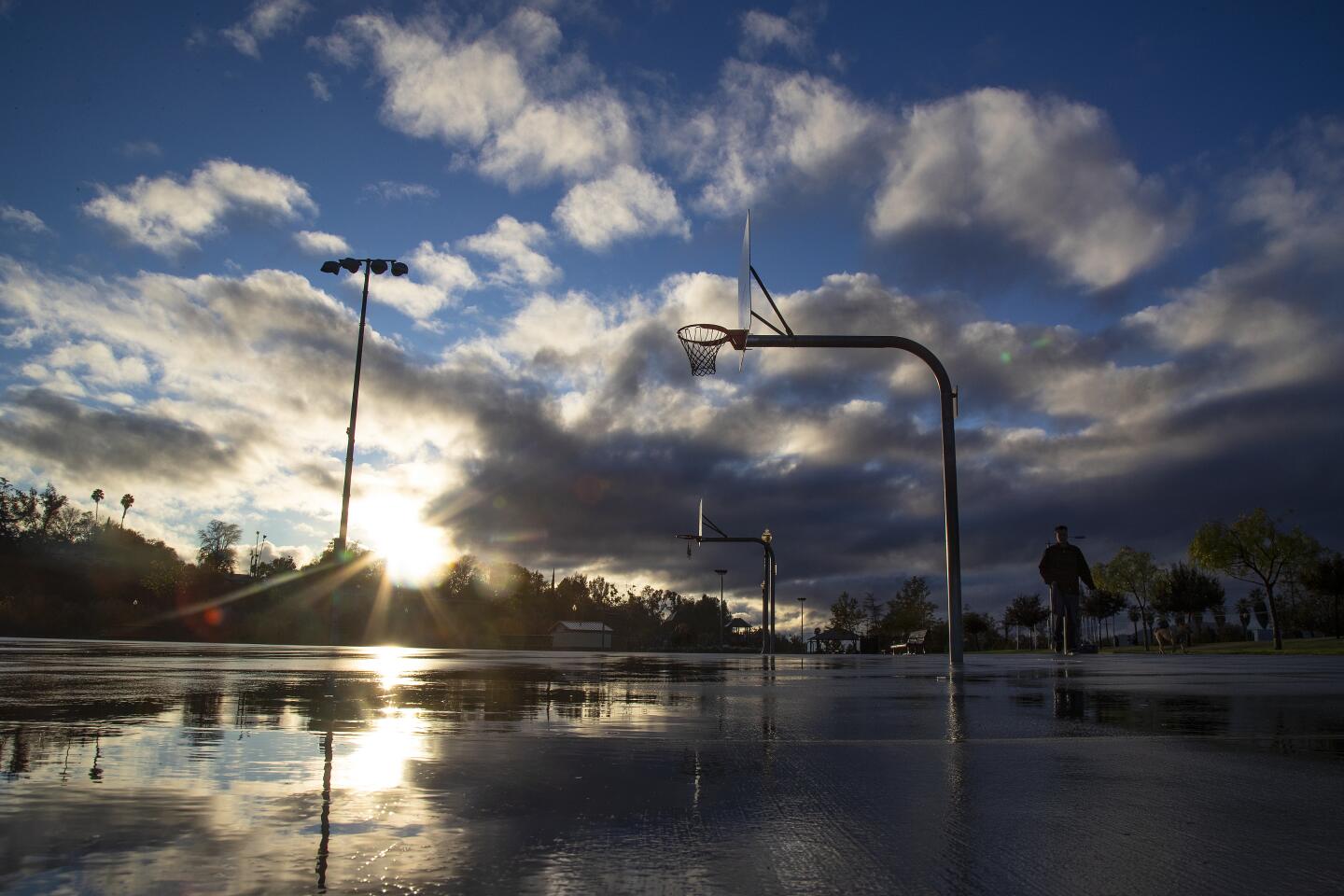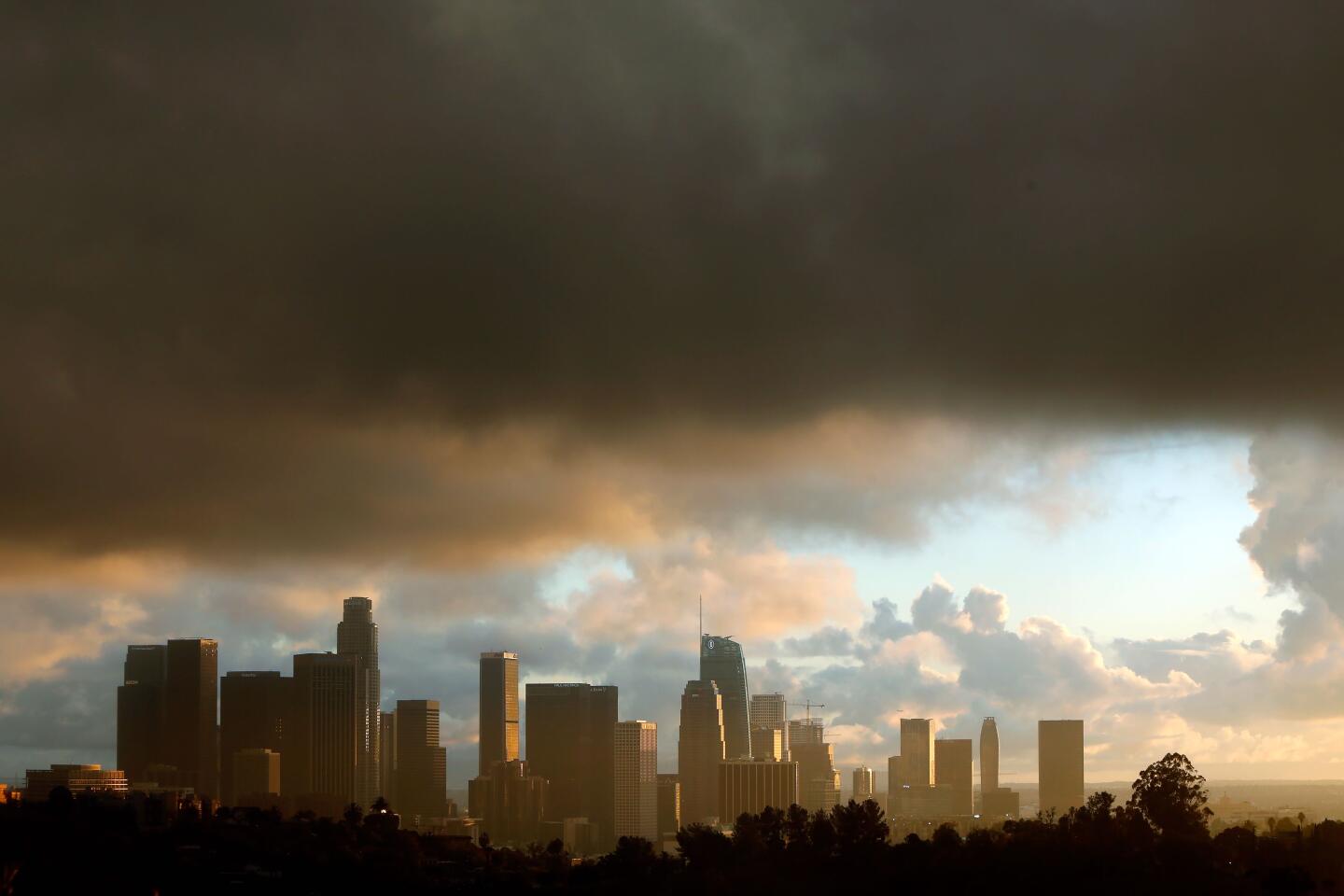Atmospheric river storms are getting worse and causing billions in damage across California
- Share via
Atmospheric river storms like the one pounding California this week are becoming more intense and cost Western states roughly $1 billion in damage annually, according to a report on the weather phenomenon.
The storms, which carry moisture from the tropics to the mid-latitude regions, have caused some of California’s biggest deluges. But when a storm passes, what’s left in its wake?
In the study published Wednesday in the journal Science Advances, scientists found that from 1978 to 2017, atmospheric rivers caused $42.6 billion in flood damage in 11 Western states — 84% of the estimated total water-related damage of $50.8 billion. That’s roughly $1.1 billion in damage done by atmospheric rivers every year.
“Research has shown that these storms are going to become more intense over the coming decades,” said Tom Corringham, one of the authors of the study by the Scripps Institution of Oceanography at UC San Diego and the U.S. Army Corps of Engineers.
Atmospheric rivers, such as the “Pineapple Express” storms that come from the direction of the Hawaiian Islands, have accounted for at least $19.2 billion in damage across California — more than any other state examined during the study period. Researchers found that Sonoma County was hit hardest by the weather phenomenon, racking up $5.2 billion in destruction.
Two major atmospheric events in Northern California played a significant role in the state’s storm-related costs: the seven-day flooding of the Russian River at Guerneville in 1995 and a 2017 event that damaged the main and emergency spillways of the Oroville Dam in Northern California, prompting more than 180,000 residents to evacuate.
Both events caused over $1 billion in damage.
The study shows that relatively few “extreme” atmospheric rivers — just 13 in 40 years — were responsible for a significant amount of flood damage in the 11 states.
California was at the mercy of an atmospheric river again Wednesday — though the effects were far less extreme.
A weather system fed by a moisture-rich atmospheric river began dumping rain across Southern California, with cars spinning out on freeways and traffic slowing to a crawl across much of the region.
Though rainfall rates were a bit weaker than the onslaught originally forecast by meteorologists, the storm still left a mark.
Shortly after 4 a.m., a semitrailer truck skidded off the road heading from the northbound 710 Freeway to the 60 Freeway in East Los Angeles, dangling precariously off the transition bridge. The crash caused the California Highway Patrol to close the ramp.
By daybreak, dozens of crashes had been reported across the region, snarling traffic along most major freeways in Los Angeles County.
Atmospheric rivers like this one are a concentrated line of water vapor in the middle and lower atmospheric levels. The continuous stream of moisture pushes across the ocean until it encounters an obstacle, such as the coastal ranges of the Western U.S., which then causes the atmospheric river to unleash its load of moisture.
Some atmospheric rivers are weak and produce beneficial rain, helping vanquish devastating droughts.
In 2016, a series of larger atmospheric rivers helped ease California’s epic drought by producing record rain and snow in the northern part of the state.
Just a few atmospheric river events can provide West Coast states such as California with a third to half of their annual precipitation, increasing snowpack levels and filling basins. A strong atmospheric river can carry 7 ½ to 15 times the average flow of liquid water at the mouth of the Mississippi River. In fact, Corringham says he’s working on a new study examining the benefits of the moisture-rich storms as they replenish water supplies.
But larger, more destructive atmospheric rivers can cause extreme rainfall, floods and mudslides.
Heavy rain in the Bay Area on Tuesday night caused a landslide that eroded about 30 feet of hillside in San Bruno. Though no property damage or injuries were reported, the landslide prompted officials to declare a local emergency.
And Wednesday morning, steady rain prompted the National Weather Service to issue flash flood watches for burn areas across Santa Barbara and Ventura counties, including the scars created by the recent Cave, Maria and Easy fires. A flash flood watch also is in effect for the Saddleridge, Tick and Getty burn areas in Los Angeles County.
The downpour sent rocks tumbling onto a stretch of Topanga Canyon Boulevard in Malibu, while flooding from the raging Escondido Creek closed a road in San Diego County. Soggy conditions also kept Knott’s Berry Farm in Buena Park and Six Flags Magic Mountain in Valencia closed for the day.
The latest storm follows the wettest November in years in parts of L.A. County. And more showers are on the way, with rain forecast to hit the region over the weekend. Preliminary forecasts indicate the next storm will be significantly weaker in Southern California.
On average, 30% to 50% of the West Coast’s annual precipitation comes from a few atmospheric rivers each year. And the new data conclude that 99% of all flood damage in the Western coastal states of California, Oregon and Washington was caused by atmospheric rivers.
Last season’s unusually cold and wet winter brought heavy snow and serious flooding in Northern California, as dozens of atmospheric rivers pounded the state early in 2019.
Infrastructure also factors into the cost of the damage inflicted by atmospheric rivers, research shows. Areas near coastlines and rivers proved most vulnerable to significant flooding. Yet most residents remain undeterred by the danger.
“There isn’t much evidence that people are moving to safer areas after their homes are damaged,” Corringham said. “Generally people rebuild in a place which leaves them at risk in future flooding.”
Heavy precipitation can cause extensive damage to roadways, often forcing closures as the asphalt gives way. After several moisture-packed atmospheric rivers pounded the San Jacinto and San Bernardino mountains in February, road repairs in the area were estimated to cost at least $14 million.
The Congressional Budget Office reports that damage from hurricane winds and storm-related flooding costs $54 billion a year. But, Corringham said, unlike the tallies associated with hurricanes and tornadoes, there is no systemic accounting of the damage caused by atmospheric rivers, although strides have been made in the last decade.
As the climate warms, extreme atmospheric rivers will become more intense, researchers found. Modest increases in a storm’s intensity can result in significant monetary damage. Without stabilizing the global climate system, it’s not just the land that will be at risk, Corringham said:
“It’s one of the many ways in which the economy will be affected by climate change.”
Times staff writer Paul Duginski contributed to this report.
